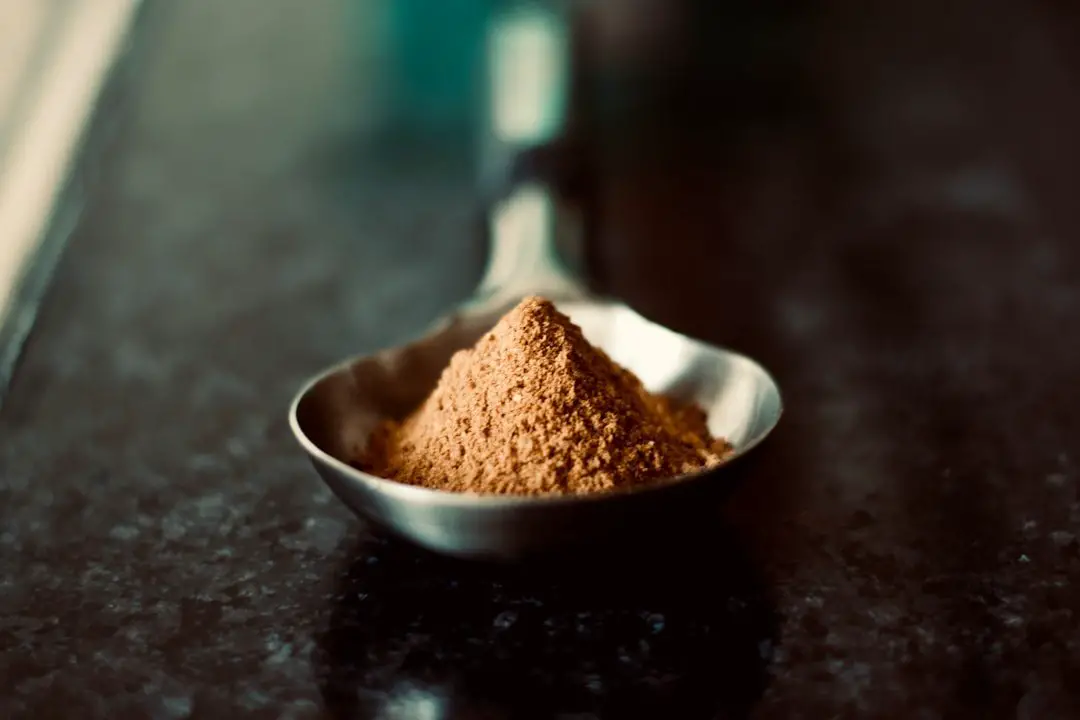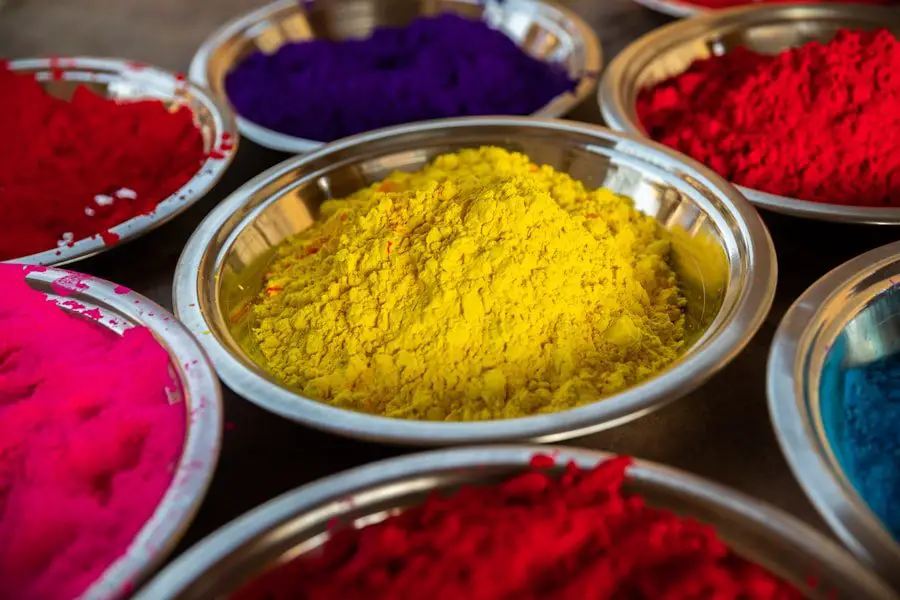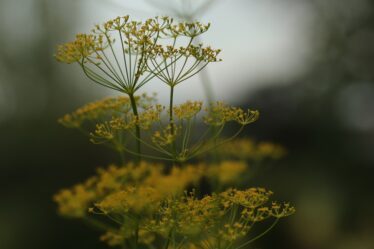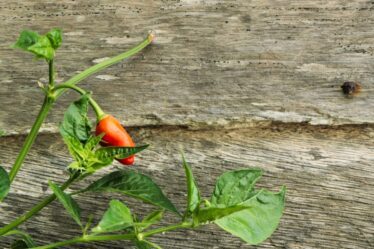
Curry powders are a staple in global cuisine, known for their vibrant flavors and ability to transform any dish into a burst of exotic taste. From the fragrant curries of India to the spicy renditions of Thailand, curry powders have become a beloved ingredient in kitchens around the world. In this article, we will delve into the origins of curry powders, explore their different types and flavor profiles, discuss the role of spices and herbs in creating the perfect blend, and highlight their health benefits and nutritional value. We will also guide you through the art of making homemade curry powders, provide ideas for incorporating them into your cooking, and suggest pairings with different meats, vegetables, and grains. Additionally, we will explore the global influence of curry powders on fusion cuisine and street food, offer tips for storing and preserving them, and encourage you to explore new flavors and varieties from around the world.
Key Takeaways
- Curry powders have their origins in India and have become a significant part of global cuisine.
- Different types of curry powders have unique flavor profiles based on the combination of spices and herbs used.
- Spices and herbs play a crucial role in creating the perfect blend of curry powder.
- Curry powders offer various health benefits and are a good source of nutrition.
- Homemade curry powders can be customized to suit individual preferences and tastes.
Understanding the Origins of Curry Powders and Their Significance in Global Cuisine
Curry powders have a rich history that dates back centuries. They originated in India, where they were used as a way to preserve and enhance the flavors of various dishes. The word “curry” itself is derived from the Tamil word “kari,” which means sauce or gravy. Over time, curry powders evolved and spread to other parts of the world through trade routes and colonization.
The cultural significance of curry powders varies across different regions. In India, curry is deeply ingrained in the culinary traditions and is considered a national dish. It is a symbol of hospitality and is often served during special occasions and festivals. In Southeast Asia, particularly in countries like Thailand and Malaysia, curry powders are used to create spicy and aromatic curries that are enjoyed with rice or noodles. In the Caribbean, curry powders are a staple in dishes like goat curry and roti, reflecting the influence of Indian indentured laborers who were brought to the region during colonial times.
The Different Types of Curry Powders and Their Unique Flavor Profiles
There are countless types of curry powders, each with its own unique flavor profile. The main distinction lies in the combination of spices and herbs used in the blend. Here are a few examples of popular curry powders from different regions:
– Indian Curry Powder: This is perhaps the most well-known type of curry powder. It typically includes a blend of spices such as turmeric, cumin, coriander, cardamom, cinnamon, and cloves. The result is a warm and aromatic flavor profile that is both savory and slightly sweet.
– Thai Curry Powder: Thai curry powders are known for their fiery heat and complex flavors. They often include ingredients like dried red chilies, lemongrass, galangal, kaffir lime leaves, and shrimp paste. The combination of these ingredients creates a spicy and tangy flavor profile that is characteristic of Thai cuisine.
– Jamaican Curry Powder: Jamaican curry powders are heavily influenced by Indian flavors but have their own unique twist. They typically include spices like turmeric, cumin, coriander, allspice, fenugreek, and mustard seeds. The result is a bold and aromatic flavor profile that is both spicy and slightly sweet.
The Role of Spices and Herbs in Creating the Perfect Curry Powder Blend
| Spice/Herb | Flavor Profile | Health Benefits | Quantity Used (per 1 cup of curry powder) |
|---|---|---|---|
| Cumin | Earthy, nutty, warm | May aid digestion, improve blood sugar control | 2 tbsp |
| Coriander | Citrusy, slightly sweet | May lower cholesterol, reduce inflammation | 2 tbsp |
| Turmeric | Earthy, slightly bitter | Powerful anti-inflammatory, may improve brain function | 2 tbsp |
| Cinnamon | Sweet, warm | May lower blood sugar, reduce inflammation | 1 tsp |
| Cardamom | Spicy, sweet | May improve digestion, freshen breath | 1 tsp |
| Cloves | Warm, sweet | May have antibacterial properties, improve liver health | 1 tsp |
| Black Pepper | Pungent, slightly sweet | May improve digestion, enhance nutrient absorption | 1 tsp |
| Chili Powder | Spicy, smoky | May boost metabolism, reduce inflammation | 2 tbsp |
Spices and herbs play a crucial role in creating the perfect blend of curry powder. Each spice contributes its own unique flavor and aroma, resulting in a harmonious balance of tastes. Here are some common spices and herbs used in curry powders:
– Turmeric: This vibrant yellow spice is a staple in curry powders. It adds a warm and earthy flavor to the blend and gives curries their characteristic yellow color.
– Cumin: Cumin is another essential spice in curry powders. It has a warm and slightly nutty flavor that adds depth and complexity to the blend.
– Coriander: Coriander seeds have a citrusy and slightly floral flavor that pairs well with other spices in curry powders. They add a bright and fresh note to the blend.
– Cardamom: Cardamom pods contain small black seeds that have a sweet and floral flavor. They add a subtle sweetness and aroma to curry powders.
– Cinnamon: Cinnamon sticks or powder are often used in curry powders to add warmth and a hint of sweetness. They contribute to the overall balance of flavors in the blend.
– Cloves: Cloves have a strong and pungent flavor that adds depth and complexity to curry powders. They should be used sparingly, as their flavor can easily overpower other spices.
By experimenting with different combinations and ratios of these spices and herbs, you can create your own customized curry powder blend that suits your taste preferences.
The Health Benefits of Curry Powders and Their Nutritional Value
In addition to their delicious flavors, curry powders also offer numerous health benefits. Many of the spices used in curry powders have been used for centuries in traditional medicine for their healing properties. Here are some of the health benefits of curry powders:
– Anti-inflammatory properties: Turmeric, one of the main ingredients in curry powders, contains a compound called curcumin, which has powerful anti-inflammatory effects. It has been shown to reduce inflammation in the body and may help alleviate symptoms of conditions like arthritis.
– Antioxidant properties: Many of the spices used in curry powders, such as turmeric, cinnamon, and cloves, are rich in antioxidants. These compounds help protect the body against oxidative stress and may reduce the risk of chronic diseases like heart disease and cancer.
– Digestive benefits: Some spices used in curry powders, like cumin and coriander, have been traditionally used to aid digestion. They can help stimulate the production of digestive enzymes and improve overall gut health.
– Immune-boosting properties: Several spices used in curry powders, including turmeric, ginger, and garlic, have immune-boosting properties. They can help strengthen the immune system and protect against infections.
In terms of nutritional value, curry powders are low in calories and fat but rich in vitamins and minerals. They are a good source of vitamin E, vitamin K, iron, and manganese. However, it’s important to note that the nutritional content may vary depending on the specific blend of spices used.
The Art of Making Homemade Curry Powders and Customizing Flavors

Making homemade curry powders is a rewarding and creative process that allows you to customize the flavors to your liking. Here is a step-by-step guide to making your own curry powder:
1. Gather your spices and herbs: Start by gathering the spices and herbs you want to include in your curry powder blend. This can include any combination of turmeric, cumin, coriander, cardamom, cinnamon, cloves, and other spices of your choice.
2. Toast the whole spices: If you’re using whole spices, it’s best to toast them first to enhance their flavors. Heat a dry skillet over medium heat and add the whole spices. Toast them for a few minutes until fragrant, stirring occasionally to prevent burning.
3. Grind the spices: Once the toasted spices have cooled down, grind them into a fine powder using a spice grinder or mortar and pestle. If you’re using pre-ground spices, you can skip this step.
4. Mix the ground spices: In a bowl, combine the ground spices in the desired ratios to create your curry powder blend. Start with small amounts of each spice and adjust the ratios to your taste preferences.
5. Store the curry powder: Transfer the curry powder to an airtight container and store it in a cool, dark place. It will stay fresh for several months, but for optimal flavor, it’s best to use it within a few weeks.
Once you have your homemade curry powder, you can experiment with different flavors by adding other ingredients like dried chili flakes, dried herbs, or even dried fruits for a touch of sweetness. The possibilities are endless, and you can create unique blends that suit your personal taste preferences.
The Best Ways to Use Curry Powders in Cooking and Recipes to Try
Curry powders are incredibly versatile and can be used in a wide range of dishes. Here are some ideas for incorporating them into your cooking:
– Curries: The most obvious way to use curry powders is in curries. Whether you’re making a vegetable curry, chicken curry, or seafood curry, adding a spoonful of curry powder will instantly elevate the flavors and give the dish a vibrant color.
– Marinades: Curry powders can be used as a base for marinades for meats, poultry, or tofu. Simply mix the curry powder with some oil, yogurt, or coconut milk, and marinate your protein of choice for a few hours before grilling or roasting.
– Soups and stews: Add a teaspoon or two of curry powder to your favorite soups or stews to give them an extra kick of flavor. It works particularly well in lentil soups, pumpkin soups, or tomato-based stews.
– Salad dressings: Create a unique salad dressing by whisking together some olive oil, lemon juice, honey, and a pinch of curry powder. Drizzle it over mixed greens or roasted vegetables for a burst of flavor.
– Roasted vegetables: Toss your favorite vegetables with some olive oil and curry powder before roasting them in the oven. The curry powder will add a deliciously spicy and aromatic note to the vegetables.
Here are a few recipes to try using curry powders as a key ingredient:
– Chicken Curry: In a large pot, heat some oil and sauté onions, garlic, and ginger until fragrant. Add chicken pieces and cook until browned. Stir in curry powder, coconut milk, and vegetables of your choice. Simmer until the chicken is cooked through and the flavors have melded together. Serve with rice or naan bread.
– Vegetable Curry: Heat some oil in a pan and sauté onions, garlic, and ginger until softened. Add your favorite vegetables, such as cauliflower, carrots, and bell peppers, and cook until slightly tender. Stir in curry powder, coconut milk, and vegetable broth. Simmer until the vegetables are cooked to your liking. Serve with rice or quinoa.
– Curried Lentil Soup: In a large pot, heat some oil and sauté onions, garlic, and ginger until fragrant. Add red lentils, vegetable broth, curry powder, and diced tomatoes. Simmer until the lentils are cooked through and the flavors have melded together. Season with salt and pepper to taste. Serve with crusty bread.
Pairing Curry Powders with Different Meats, Vegetables, and Grains
Pairing different types of curry powders with meats, vegetables, and grains can help create balanced and flavorful dishes. Here are some suggestions:
– Indian Curry Powder: Indian curry powder pairs well with chicken, lamb, or beef. It also complements vegetables like cauliflower, potatoes, peas, and spinach. Serve it with basmati rice or naan bread for a complete meal.
– Thai Curry Powder: Thai curry powder works well with seafood like shrimp or fish. It also pairs nicely with vegetables like bell peppers, eggplant, and bamboo shoots. Serve it with jasmine rice or noodles for an authentic Thai experience.
– Jamaican Curry Powder: Jamaican curry powder is perfect for dishes like goat curry or chicken curry. It also pairs well with vegetables like sweet potatoes, carrots, and bell peppers. Serve it with rice and peas or roti for a taste of the Caribbean.
When pairing curry powders with meats, it’s important to consider the cooking time and method. Some meats may require longer cooking times to become tender and absorb the flavors of the curry powder. Similarly, when pairing curry powders with vegetables, consider their cooking times and textures to ensure they are cooked to your liking.
The Global Influence of Curry Powders on Fusion Cuisine and Street Food
Curry powders have had a significant influence on fusion cuisine and street food around the world. Their bold flavors and versatility make them a popular choice for chefs and food vendors looking to create unique and exciting dishes. Here are some examples of popular dishes that incorporate curry powders in unique ways:
– Currywurst: This popular street food in Germany combines sliced sausages with a tangy tomato-based sauce that is flavored with curry powder. It is typically served with fries or bread rolls.
– Curry Laksa: This Malaysian dish is a spicy noodle soup that combines Chinese and Indian flavors. It features a rich coconut milk-based broth flavored with curry powder, lemongrass, and other spices. It is typically served with noodles, tofu, shrimp, or chicken.
– Curry Puffs: These savory pastries are a popular snack in Southeast Asia, particularly in countries like Malaysia and Singapore. They are filled with a mixture of curried potatoes, onions, and meat (usually chicken or beef) and are deep-fried until golden brown.
– Curry Tacos: Fusion cuisine has given rise to unique creations like curry tacos, which combine the flavors of Indian curries with the convenience of Mexican street food. These tacos typically feature a filling of curried vegetables or meat, topped with fresh cilantro, onions, and a squeeze of lime.
The global influence of curry powders on fusion cuisine and street food highlights their ability to adapt and blend with different culinary traditions. They have become a symbol of creativity and innovation in the culinary world, inspiring chefs and home cooks alike to experiment with new flavors and combinations.
Tips for Storing and Preserving Curry Powders for Optimal Flavor and Freshness
To ensure that your curry powders stay fresh and flavorful, it’s important to store them properly. Here are some tips:
– Store in airtight containers: Transfer your curry powders to airtight containers to protect them from moisture, light, and air. This will help preserve their flavors and prevent them from losing their potency.
– Keep in a cool, dark place: Store your curry powders in a cool, dark place like a pantry or cupboard. Avoid storing them near the stove or other sources of heat, as exposure to heat can cause the spices to lose their flavor more quickly.
– Avoid using wet spoons: When using your curry powders, make sure to use dry spoons to prevent moisture from getting into the container. Moisture can cause the spices to clump together and lose their freshness.
– Check for freshness: Over time, spices can lose their potency and flavor. It’s a good idea to check the freshness of your curry powders periodically. If they have been sitting in your pantry for a long time, they may have lost their aroma and taste. One way to check for freshness is to smell the spices. If they have a weak or dull scent, it’s likely that they have gone stale. Another method is to taste a small amount of the spice. If it lacks the vibrant and robust flavor that you expect, it’s time to replace it with a fresh batch. Keeping your curry powders fresh will ensure that your dishes are full of delicious and aromatic flavors.
If you’re a fan of curry powders and love experimenting with different flavors in your cooking, you might be interested in learning how to make a delicious fruit salad. This step-by-step guide from Flavorful Sips provides all the tips and tricks you need to create a refreshing and flavorful fruit salad that will impress your guests. And while we’re on the topic of healthy and delicious recipes, why not check out their article on high-fiber foods? It’s a great resource for those looking to add more fiber to their diet. And if you’re specifically interested in vegetable curries, don’t miss their article on cooking Karaikudi vegetable curry. It’s packed with mouthwatering recipes and helpful cooking techniques. So go ahead and explore these articles for some culinary inspiration!



